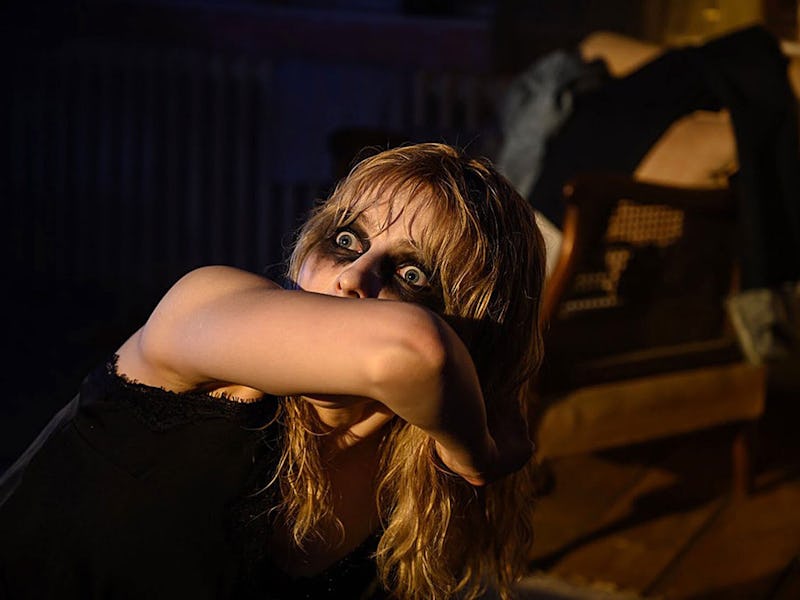Last Night in Soho review: Edgar Wright’s scary thriller is a messy disappointment
Though Edgar Wright's latest doesn't break the mold, it’s fitfully effective and stylish.

From Shaun of the Dead to Hot Fuzz and Baby Driver, Edgar Wright’s made a career out of parodying pop-culture clichés, even as he treats the history of his favorite genres with a certain nostalgic reverence.
With Last Night in Soho, which premiered at the Venice Film Festival ahead of a theatrical bow on October 29, Wright leaves behind his hyperactive style — full of quick edits and tongue-in-cheek post-modern flourishes — to make a psychological thriller that mostly plays it straight.
Last Night in Soho initially succeeds in this endeavor, at least enough to prove that Wright is that rare director skilled at both making you laugh and scaring the pants off you. But glaring script issues ultimately derail this story, failing its best character in the process.
Last Night in Soho serves both as a love letter to the city of London and a cautionary tale for those who’d dare, despite its hidden dangers, to make this city their home.
In a first for Wright, the movie (co-written with 1917 scribe Kristy Wilson-Cairns) is centered around complex female characters, a welcome deviation from his typically white-male protagonists.
At the film’s core is Eloise (Thomasin McKenzie), a small-town girl who moves to London to attend fashion school and ultimately realizes her dream of becoming a designer. Or is that her mother's dream? This is a tough call to make; Eloise is still haunted by memories of her schizophrenia-afflicted mother, which sometimes terrorize her in broad daylight despite her mother having died by suicide years prior.
Anya Taylor-Joy stares ominously in Last Night in Soho.
Like many others, Eloise quickly realizes London is not paved with gold and adorned with fresh roses. It’s a big city, where hopes can be crushed and dreams extinguished — where your roommate could easily be cruel, if not murderous, and predators are certainly lurking around every shadowy corner.
And yet, London is still the city Petula Clark and Audrey Hepburn once called home. So long as you can see traces of those golden years, it’s easy enough to look past the rest. When Eloise decides to rent a room in a creaky old house owned by the strict Miss Collins (Diana Rigg, in her final film role), she finds herself dreaming of Soho in the '60s. Eventually, Eloise mirrors the perspective of an aspiring singer named Sandy (Anya Taylor-Joy, of The Queen’s Gambit) through a series of startling visions.
Last Night in Soho handles time travel with a certain dreamlike quality, playing up the intrigue of whether we’re seeing real supernatural occurrences or simply the imaginations of our young protagonists at play.
Bright lights, shiny store signs, and dazzling costumes define the magical aura of the Swinging Sixties, ensuring that the audience falls as instantly in love with the setting as Eloise does. It helps that our entry point into this time period is the dazzlingly hypnotic Sandy, whose every move McKenzie recreates with eerie precision.
Seeing these young actresses mirror one another’s movements is a feat of choreography, particularly during a phenomenal one-take dance sequence where Eloise and Sandy seamlessly trade places every few seconds. Aiding Wright’s recreation of '60s Soho is a time-appropriate soundtrack; unfortunately, this feels like the first picture in which Wright overdoes it with music, and his needle-drops overload the experience in a manner that’s ultimately distracting.
Thomasin McKenzie is in over her head in Last Night in Soho.
Wright quickly makes it clear that Last Night in Soho is a movie about the dangers of romanticizing the past, focusing on the shadiness of its time period and the horrors lying in wait. The film is at its best when drawing inspiration from old-school Hammer Horror productions and Italian Giallo to establish a terrifying, dread-steeped nightmare state.
This is Wright, so nods and references abound, with the filmmaker paying homage to the work of Mario Bava, Nicolas Roeg’s Don’t Look Now, and Wes Craven’s Nightmare on Elm Street. His film offers effective jump scares once it enters more ghostly, horror-influenced territory, using deep-red lighting in a way that evokes classics by Dario Argento — as well as spectral imagery that brings the film closer to modern chillers like The Conjuring.
But scares alone can’t sustain a film, and this one often gets bogged down by its script. Wilson-Cairns and Wright's first collaboration never finds a way to join their distinct voices together, making the story feel disjointed and overstuffed. Without spoilers, the film features elements of #MeToo-era scripting that critique outdated gender roles and tropes within the horror genre, as well as a half-hearted attempt to address mental illness. But the movie uses these mostly as window-dressing.
Anya Taylor-Joy and Matt Smith run in Last Night in Soho.
Last Night in Soho ultimately fails to deliver any meaningful commentary about gender in horror, which makes it pale in comparison to recent female-led horror movies like Leigh Janiak’s Fear Street trilogy. Similarly, its take on mental illness is never fully explored in a way that invites unflattering comparisons to the much richer Haunting of Hill House.
Worse still, Last Night in Soho ends up neglecting its main character by not granting her a dramatically satisfying arc, which leaves a tragic backstory and the question of her mental health as the main aspects that define her.
Throughout, the audience is asked to question whether they're seeing something supernatural play out or simply watching another character’s descent into mental illness. Last Night in Soho, in this way, aims to say something thought-provoking about our nostalgia — but instead, it just ends up wallowing in tired tropes.
Last Night in Soho premiered on September 4 at the Venice Film Festival. It opens in theaters on October 29, 2021.
This article was originally published on